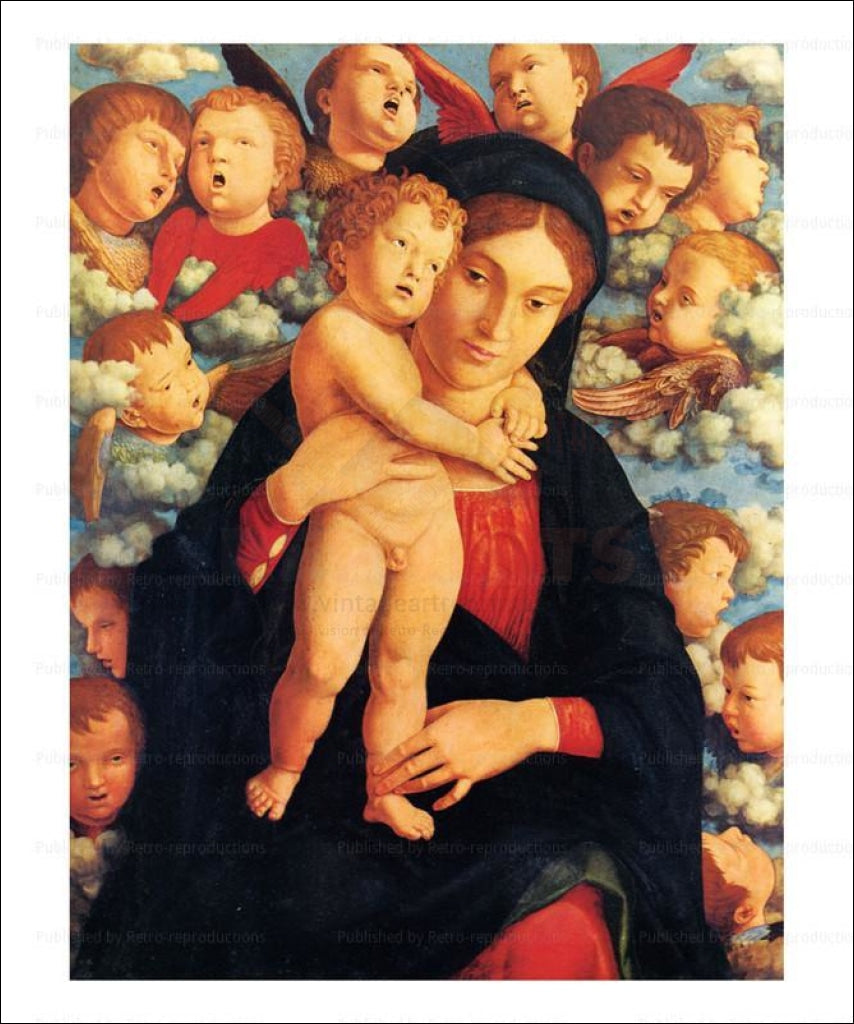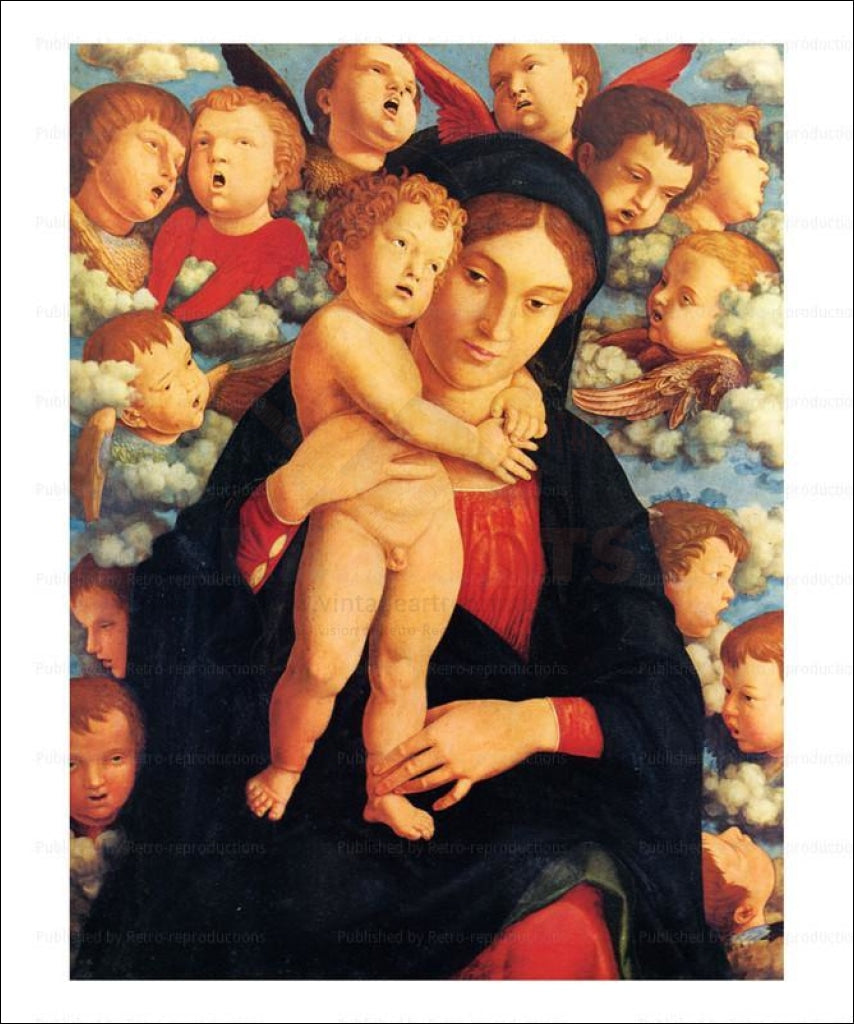La Vierge et l'Enfant avec les cherubins, Andrea Matagna, 1485
La Vierge et l'Enfant avec les cherubins, Andrea Matagna, 1485
Couldn't load pickup availability
Share
Like other artists of the time, Mantegna experimented with perspective, e.g. by lowering the horizon in order to create a sense of greater monumentality. His flinty, metallic landscapes and somewhat stony figures give evidence of a fundamentally sculptural approach to painting. He also led a workshop that was the leading producer of prints in Venice before 1500.
The Chamber's decoration was finished presumably in 1474. The ten years that followed were not happy ones for Mantegna and Mantua: Mantegna grew irritable, his son Bernardino died, as well as the Marchese Ludovico, his wife Barbara and his successor Federico (who had dubbed Mantegna cavaliere, "knight" ). Only with the election of Francesco II of the House of Gonzaga did artistic commissions in Mantua recommence. He built a stately house in the area of the church of San Sebastiano, and adorned it with a multitude of paintings. The house can still be seen today, although the pictures no longer survive. In this period he began to collect some ancient Roman busts (which were given to Lorenzo de Medici when the Florentine leader visited Mantua in 1483), painted some architectonic and decorative fragments, and finished the intense St. Sebastian now in the Louvre

-
High Quality Reprints
Every piece of art is printed using premium materials. We carefully package and deliver your order to your door.
-
Wholesale Orders
We welcome wholesale inquiries on some of our products. Click here to learn more about our offering.
Sign Up for Our Newsletter
Get a sneak peek on upcoming promos and get 10% off your first order.

